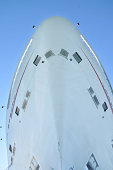Navigating Building Regulations with Innovative Structures
페이지 정보
작성자 Charlotte 작성일25-06-01 01:53 조회15회 댓글0건관련링크
본문

Space frame structures, also known as gridshell structures, have been gaining popularity in recent years due to their high-strength and resistant to deformation characteristics. These structural systems consist of a series of interconnected nodes and members that form a three-dimensional grid. Each node carries multiple members, distributing loads evenly and providing immense strength and stability to the structure.
However, when employing space frame technology in construction projects, navigating building codes is vital. The National Building Code and the National Institute of Building Sciences provide the foundation for most building codes in the United States. These codes specify minimum requirements for structural design, including considerations for structural integrity and safety protocols.
To integrate space frame technology into a building project while satisfying building codes, architects and engineers must carefully evaluate the structural system's performance under various loading conditions. This includes assessing the resistance to progressive collapse of the space frame structure, as well as its ability to function optimally in various scenarios.
To demonstrate the feasibility of space frame structures in building applications, researchers and سازه فولادی practitioners often rely on advanced computational modeling and analysis tools. Finite element analysis (FEA) and computational fluid dynamics (CFD) are two commonly employed techniques for simulating the behavior of space frame structures under various loading conditions.
One notable example of a space frame structure implemented in a building project is the Golden Gate Bridge. The iconic structure's roof consists of a series of interconnected steel shells. This space frame design provides an exceptional combination of strength, stability, and aesthetics.
In the United States, notable examples of space frame structures include the Amazon Spheres. Both structures exhibit the exceptional structural performance of space frame systems, as well as the potential of space frame technology to meet code requirements.
In conclusion, navigating building codes with space frame technology requires a comprehensive understanding of the structural system's behavior. The application of space frame structures in building projects presents numerous benefits, including enhanced durability, strength, and aesthetics. However, architects, engineers, and builders must adhere to the stringent regulations and standards to ensure public safety and prevent structural failures. By leveraging innovative materials and technologies, while following prescriptive requirements, we can develop sustainable and efficient building solutions.
댓글목록
등록된 댓글이 없습니다.

